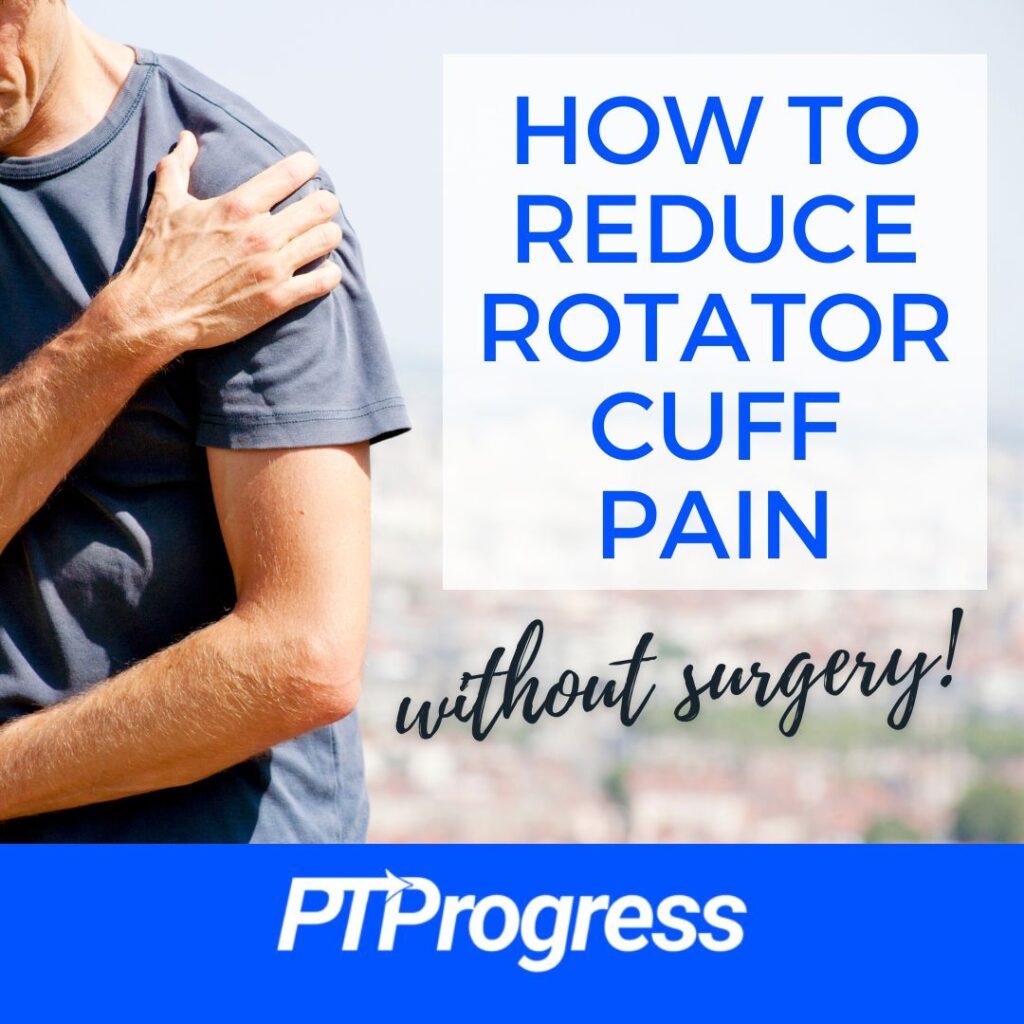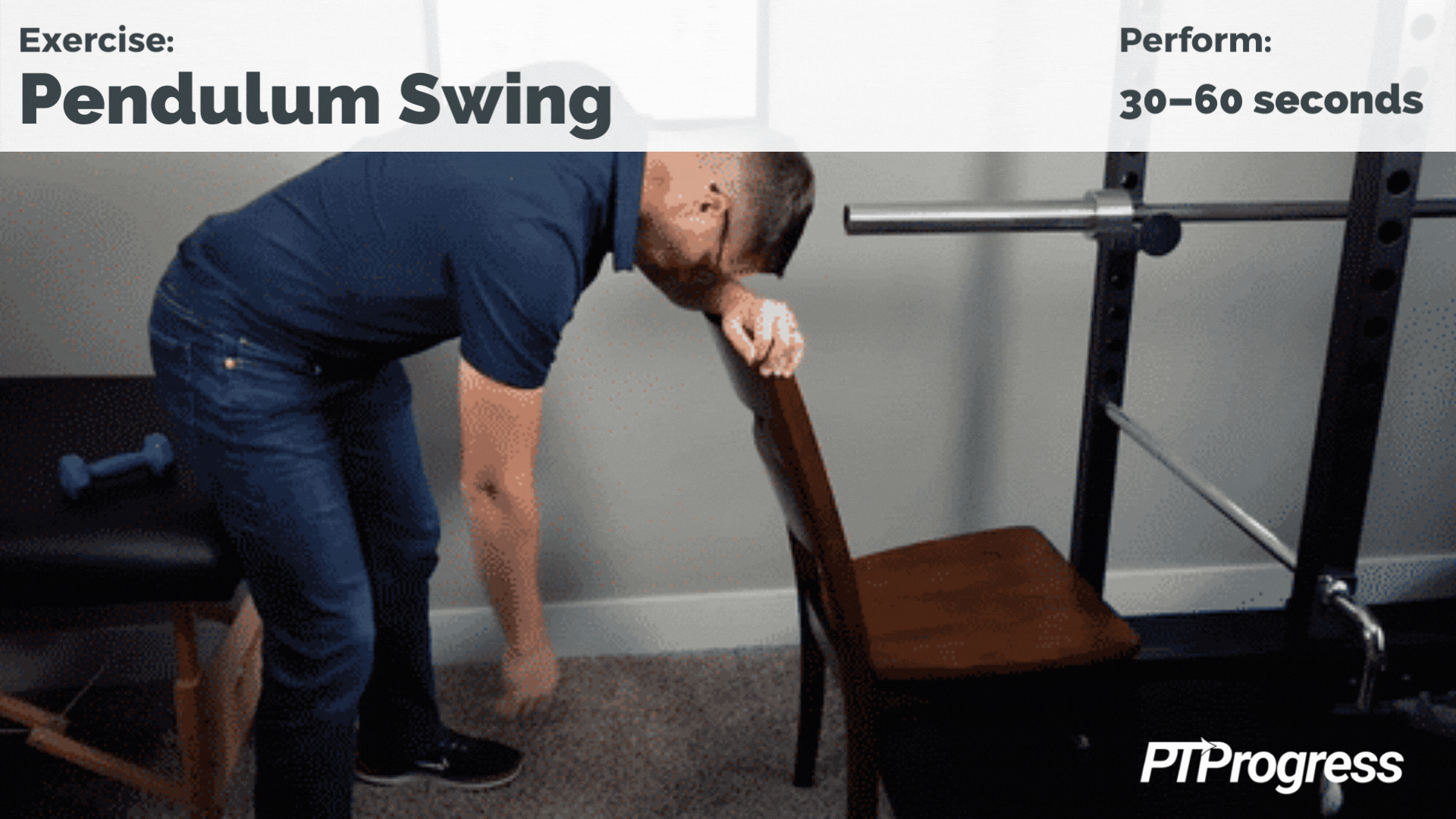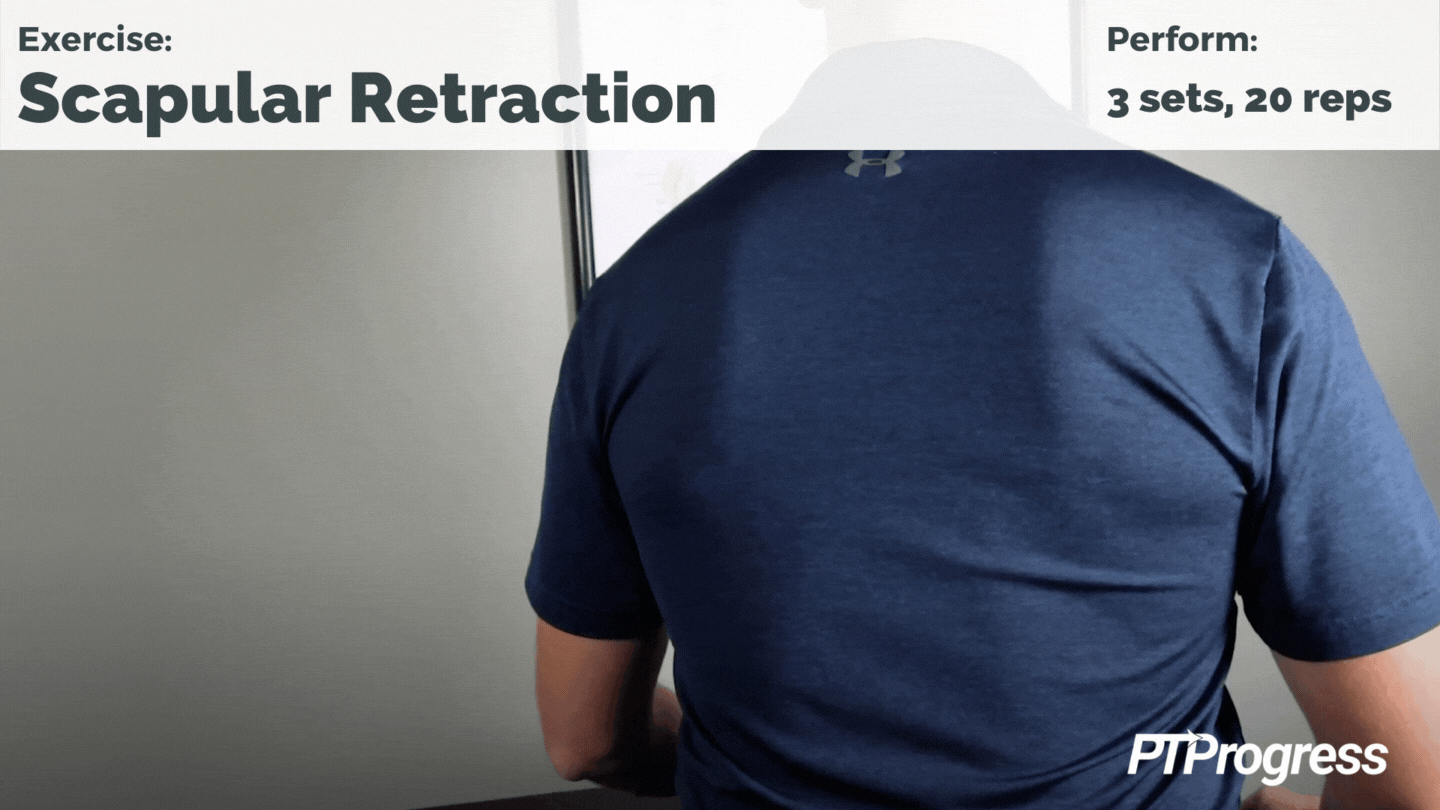
Every year, nearly 3 million people sustain a rotator cuff injury, with many requiring surgery. If you suspect you’ve torn your rotator cuff, the good news is that you may be able to treat your pain with non-operative methods such as physical therapy. In this post, I’ll share 4 steps you can take to decrease rotator cuff pain and improve shoulder mobility and function.
A Closer Look at the Rotator Cuff
The rotator cuff comprises four primary muscles. Three of the muscles rotate the shoulder outwards into external rotation while one moves the shoulder inward into what we call internal rotation.
Together, these muscles also stabilize the shoulder whenever you perform motions such as reaching overhead or out to your side. Considering the extensive versatility of the rotator cuff, injuring it can severely affect your mobility and make everyday tasks painfully difficult.
Types of Rotator Cuff Injuries
Generally, a rotator cuff injury refers to a tear in one or more of the rotator cuff muscles. The tear may be a small partial tear or a severing of the muscle in what we call a full-thickness tear.
Sometimes a rotator cuff tear happens suddenly. You may feel a pop in your shoulder after throwing a baseball or even falling onto your shoulder, for example. Other times it’s marked not by pain as much as by limited mobility.
But you can also injure your rotator cuff gradually through degenerative wear and tear, which is normal with age. Even a bone spur can scar the shoulder muscles and cause a very painful rotator cuff injury.
Repairing a Rotator Cuff
Many times, a rotator cuff tear is resolved with surgery, but every case is different. You may need surgery to repair small partial tears, or you may be able to manage a full-thickness tear conservatively without surgery. It all depends on your ability to function and your quality of life.
The bottom line is you don’t necessarily have to undergo surgery to treat a rotator cuff tear. In fact, studies show that non-operative treatment, such as physical therapy, can have up to a 75% success rate.
As a physical therapist myself, I’ve found that a few weeks of PT can help patients improve shoulder function and reduce rotator cuff pain, regardless of whether they have a partial or full-thickness tear.
To help reduce rotator cuff pain and speed up your recovery, take a look at the 4 steps I’ve outlined below. Remember that these tips should not replace a consultation with your physician or physical therapist, but they can act as a supplement to your recovery as directed by your provider.
How to Reduce Rotator Cuff Pain
1. Prevent Further Injury
If you suspect you’ve torn your rotator cuff, the first thing you should do is prevent further injury to the area. Don’t try to work through your pain. Allow your arm to rest and avoid making any painful or irritating movements.
2. Use Ice
The body’s natural response to pain is to protect the injured tissue, so you’ll probably experience irritation and inflammation as a consequence.
To reduce inflammation, apply ice 4–5 times a day for 15–20 minutes. You can do this at night while getting ready for bed to relieve pain and sleep better. Although a bag of ice cubes wrapped in a towel will do, you may consider buying a wearable gel ice pack. We keep ice packs like this one in the clinic and have found them to be helpful and effective.
3. Take Medication
In addition to ice therapy, your doctor may prescribe medication to reduce pain or inflammation. Depending on the type of tear you have, he or she may even recommend a cortisone steroid injection. That would require first performing a physical exam followed by an ultrasound or MRI to further diagnose the tear. Otherwise, an over-the-counter NSAID such as ibuprofen can help reduce inflammation and relieve pain.
4. Try Physical Therapy
Even with a rotator cuff tear, you can reduce pain with a few physical therapy techniques. Here are 3 moves that are safe to do early on in a rotator cuff injury.
Pendulum

The point of the pendulum exercise is to relax the shoulder muscles by creating space in the shoulder, a technique we call distraction.
To start, stand up straight and then hinge at your hips so that your arm hangs straight down. You may rest your other arm on a chair to steady yourself. Stay as relaxed as possible. From here, gently move your body side to side and forwards and backwards so your arm swings effortlessly like a pendulum.
Perform this exercise for 30–60 seconds at a time, 3–5 times a day.
Scapular Retraction

Another name for scapular retraction is simply shoulder squeezes. This one’s great for maintaining good posture, which usually suffers after a shoulder injury. The natural response to shoulder pain is to bring the arm forward to try to protect the shoulder. Scapular retraction will help reverse that motion and strengthen the back muscles between your shoulder blades.
To perform scapular retraction, sit up tall and gently squeeze your shoulder blades together—think “down and back.” You don’t have to retract 100% of the way, just enough to engage the muscles between your shoulder blades.
Hold each squeeze for 3 seconds and then relax completely. Try to perform 15–20 shoulder squeezes 3–5 times a day.
Table Slide
The last thing you want after a rotator cuff injury is for your shoulder to become so stiff and painful that you can barely move it at all. At the same time, you need to be careful to not just crank your arm overhead, because that could lead to further injury. Instead, try this table slide exercise as a way to maintain and even improve your range of motion.
Sit at a table with your arm relaxed and resting on a towel. Gently slide your arm forward on the table, but stop if you start to feel pain or discomfort in the shoulder. Bring your arm back to the starting position and repeat this movement for 30–60 seconds.
At first, you may only be able to perform 5 reaches at a time, and that’s ok. Try to repeat this exercise 3–5 times a day to maintain the range of motion you have. You can then gradually work into a pain-free range, as tolerable, to achieve more motion.
Reducing Rotator Cuff Pain: Final Thoughts
A rotator cuff injury can take many weeks or even months to heal. And although your rotator cuff won’t simply reattach itself, you can bolster your recovery by strengthening your intact muscles with physical therapy.
In truth, it may take months of rehab for damaged rotator cuff muscles to reattach. If your physician recommends surgery, you’ll need to be consistent with your exercise program based on the protocol they give you and your physical therapist.
Along your journey to shoulder rehab, you may encounter physical therapy tools such as an overhead pulley or a set of resistance bands for more challenging exercises. Just make sure you progress gradually into these advanced treatments and follow all your physician’s recommendations, which may include wearing a shoulder brace like the Breg shoulder therapy kit.
For more physical therapy insights, check out the rest of the blog!


